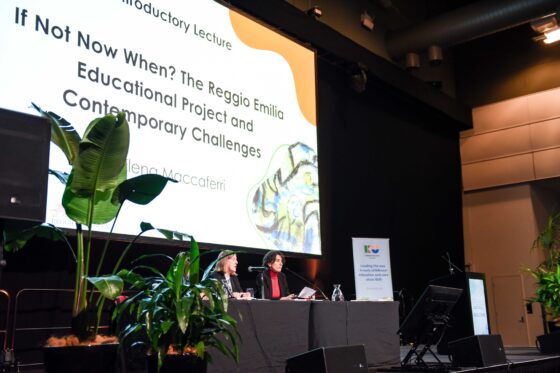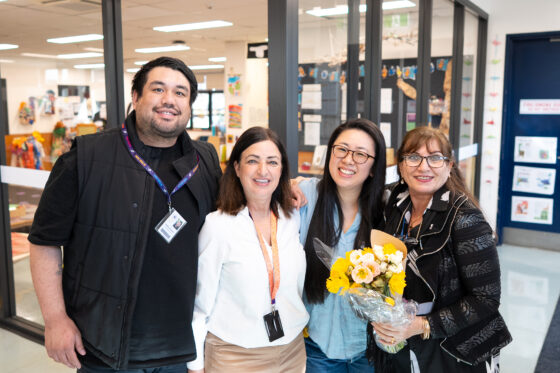The children watched the movement of their bodies reflected back at them.
Early Learning Music Teacher Amelia Scarf set up a simple, open ended provocation that became a blank canvas to observe how the children would respond and interact.
“Using just a blank white sheet and an overhead projector, I was curious to see how children would engage with their shadows,” Amelia said.
“The children moved differently, they talked differently, they walked, they sang, they existed differently when faced with their shadow. Why does this happen? Why does our shadow invite us to move differently? Do we become more aware of our movement because the “busyness” of the rest of our bodies are black? What causes us to shift into a movement focused moment when we see our shadow?”
Some of the children made the following observations:
Juliette (Garrawan): “How do shadows move?”
Ned (Garrawan): “Well, I think that the way shadows move is because the light moving in between with the big object that can’t pass through, it makes shadows because the big object is in front of the light!”
Lexie (Garrawan): “When the light is on you move and the shadows move, too!”
Remi (Burraga): “It’s inside you [the shadows]. It’s of your body and it sees inside you to see if you’re moving. It only works on light.”
“It is almost as if their shadow projection was an invitation to step into an entirely different imaginary world,” Amelia said.
“It invited action, it invited music and singing (without prompting), it invited secrets, it invited movement, exploring sizes and shapes … the possibilities were endless. It seems as though a child seeing their own shadow gives them great pleasure.
“With the space remaining empty, the children gradually filled it with ideas, with stories, with memories and with curiosities that are held for the next time that they visit this space. Stay tuned.”










